Sponsored by Advanced Clinicals, all opinions are my own!
Glycolic Acid: it’s a skin care ingredient that I’ve been using in various products over the past few years, but I never really knew what it was doing for my skin until recently. Once I discovered the benefits of Glycolic Acid, and how to use Glycolic Acid the right way in a skin care routine, I was able to really maximize its effects, and my skin is thanking me for it!
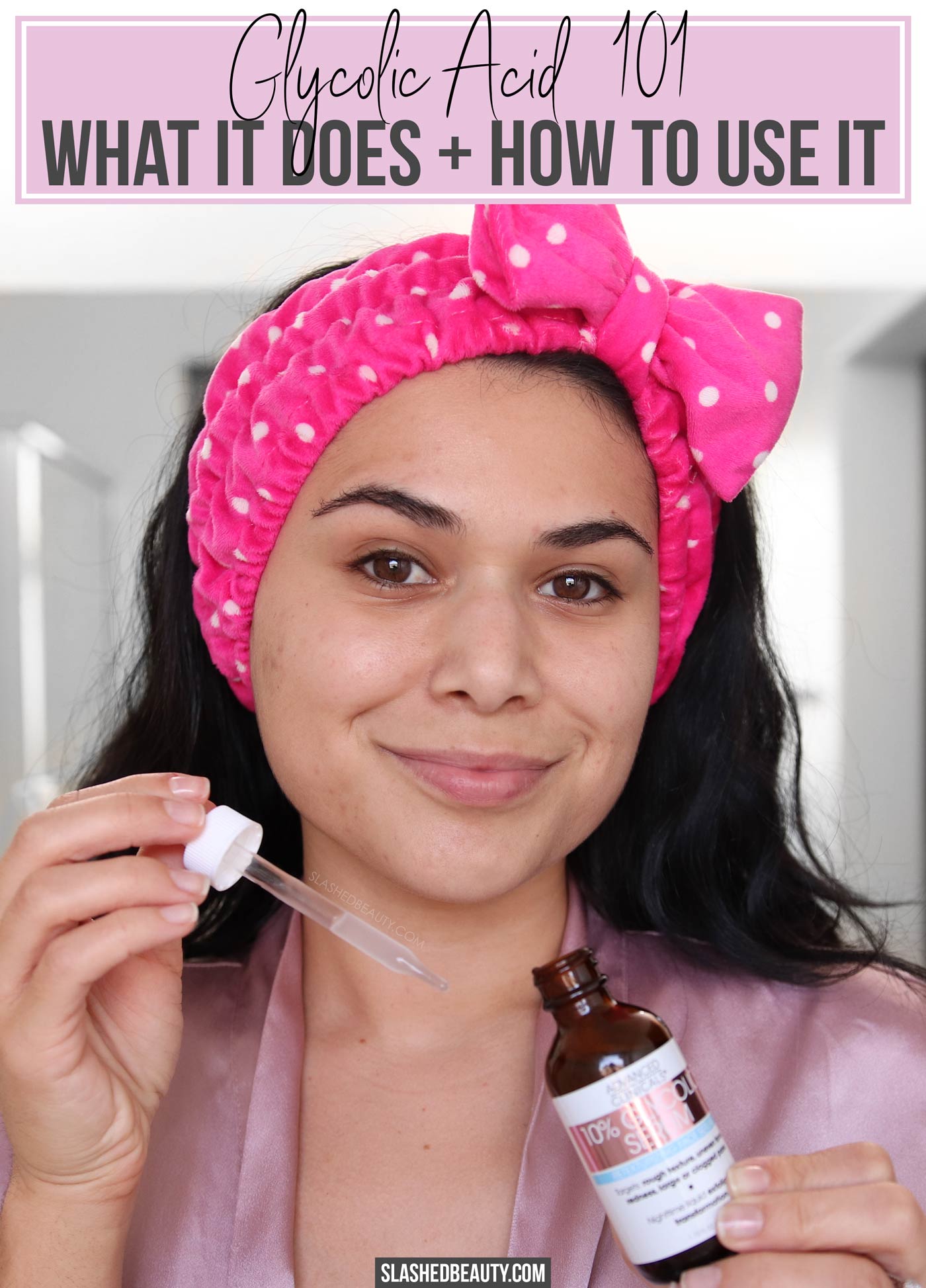
Let’s start with the basics— what is glycolic acid?
Glycolic acid is a fruit-derived alpha hydroxy acid, also known as an AHA in the skin care world. It’s a chemical exfoliant that works by “dissolving the glue between your skin cells,” according to Zoe Weisman, Director of Product Development at Advanced Clinicals.
What Does Glycolic Acid Do for Skin?
As Glycolic Acid removes dead skin cells, your cell turnover is accelerated for a faster skin renewal. This helps improve skin texture, minimize the look of large pores, reduce the appearance of fine lines, as well as helping other skin care products in your routine penetrate your skin more effectively.
Personally, I’ve found that using a chemical exfoliant like Glycolic Acid has given me better results than mechanical exfoliation (scrubs, brushes, etc) which can be a little too much for my acne-prone skin.
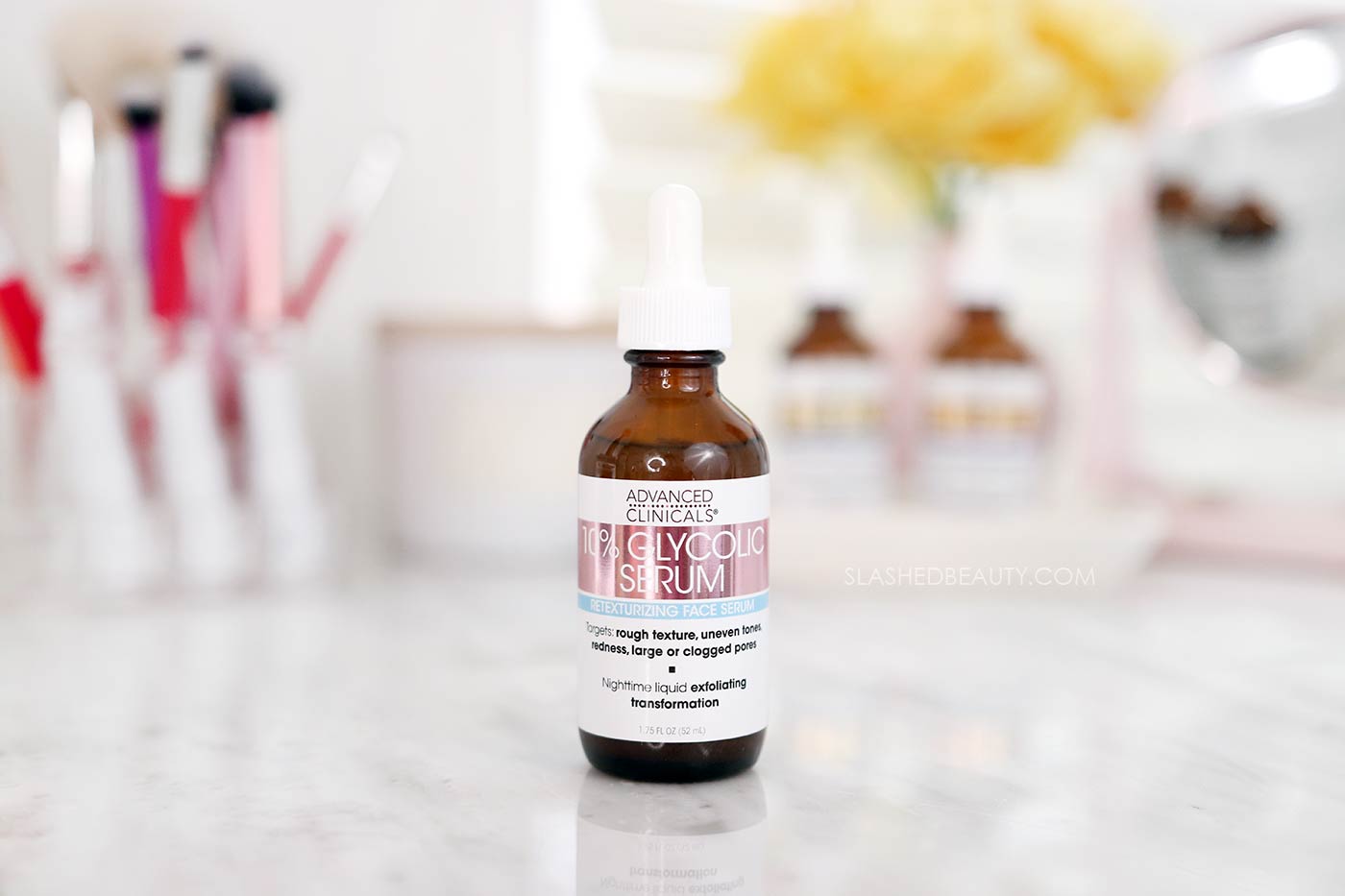
Does Glycolic Acid Work?
Over the past month and a half, I’ve been using the new Advanced Clinicals 10% Glycolic Serum. It’s only $15.95 (discount code later!), and contains a blend of Glycolic, Lactic, Salicylic and Phytic Acids which have really helped with my skin texture and acne. The Blueberry and Apple extracts work to soften and soothe sun damaged skin. Hand in hand with the rest of my current skin care routine, this serum has helped me achieve smooth skin, which is feeling and looking much more even both bare and under makeup.
When & How Often Do You Apply Glycolic Acid?
Glycolic Acid can benefit all skin types, but those with sensitive skin should be cautious. Since it’s an acid, you want to avoid applying it over red, broken or irritated skin. Dry sensitive skin should stick with using it once a week. If you build up a tolerance to it, you can try increasing from there. Since I added the ingredient into my routine gradually and have been using it now for a while, I can apply three times weekly without any issues. However, it’s important to apply Glycolic Acid at nighttime only, because it makes your skin more sensitive to the sun and UV rays. And of course, always use SPF during the day!
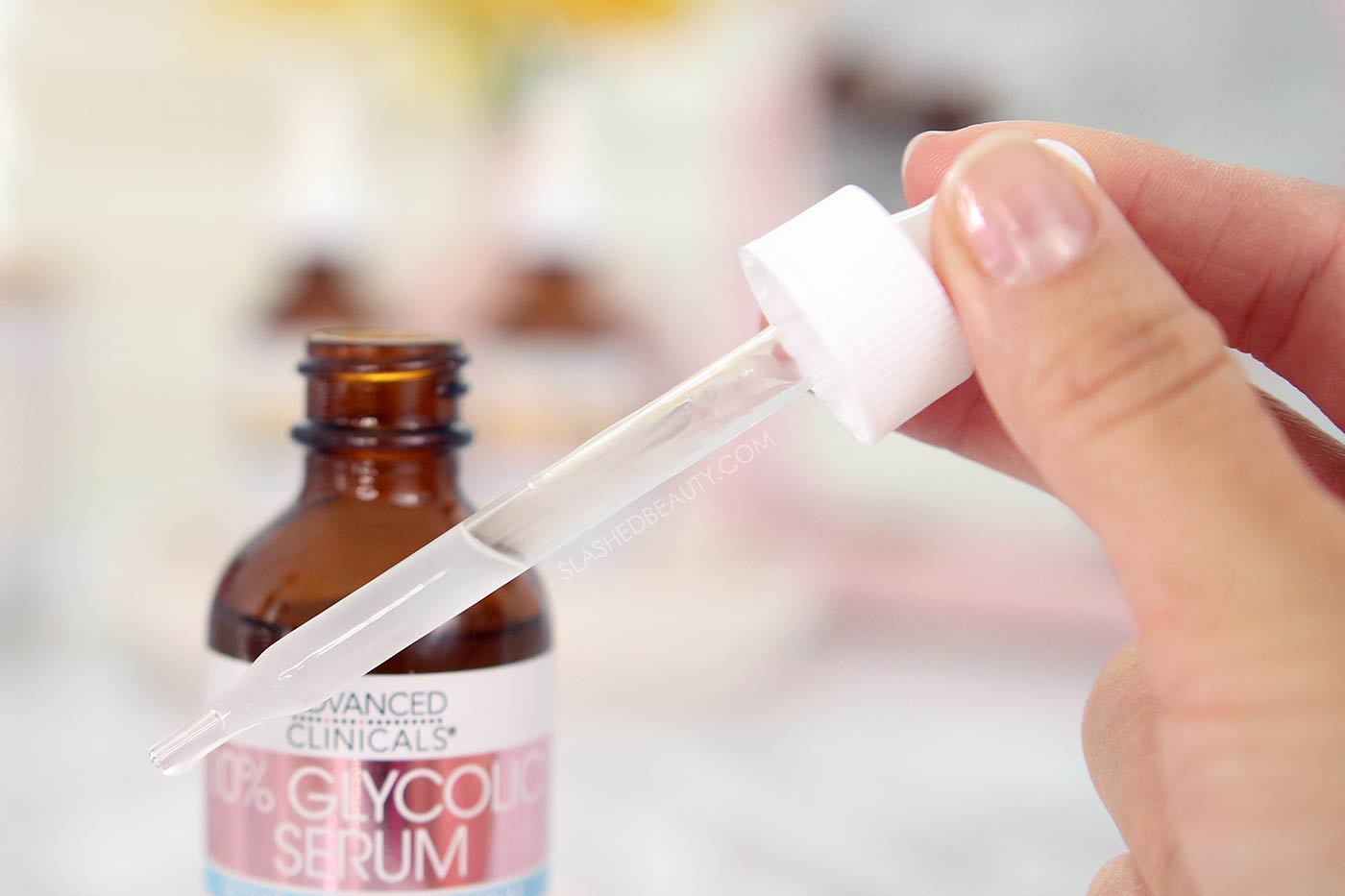
How to Use Glycolic Acid in Your Skin Care Routine
This is the part I was largely unclear about until recently, but how you use Glycolic Acid in the larger picture of your entire routine makes a difference!
As mentioned before, only use Glycolic Acid at night. After using a gentle cleanser, pat your skin dry and apply the Glycolic Acid serum. Finish with moisturizer or facial oil.
It’s important to note that Glycolic Acid can cancel out the benefits of Retinol in a routine, due to the pH differences (a whole skin care black hole we won’t fall into right now). Also, both ingredients may cause redness. If you’re using both, Weisman suggests that you should alternate them every other night.
Another potential clash is Vitamin C, which usually comes in acidic form and can cause irritation when combined with Glycolic Acid. The best way to use both in your routine would be applying your Vitamin C in the morning and Glycolic Acid at night. If you haven’t used either ingredient before, work them into your routine one at a time to gauge your sensitivity. Again, these are two ingredients I’ve been using for a while now and have no problem alternating between.
If you’re using a toner, you’ll also want to double check that it doesn’t have active ingredients or exfoliating properties as well, just to be on the safe side. I was previously using a toner with 5% Glycolic Acid, which I’ve now replaced with a Witch Hazel based toner so that I can use this serum, which is more potent anyway.
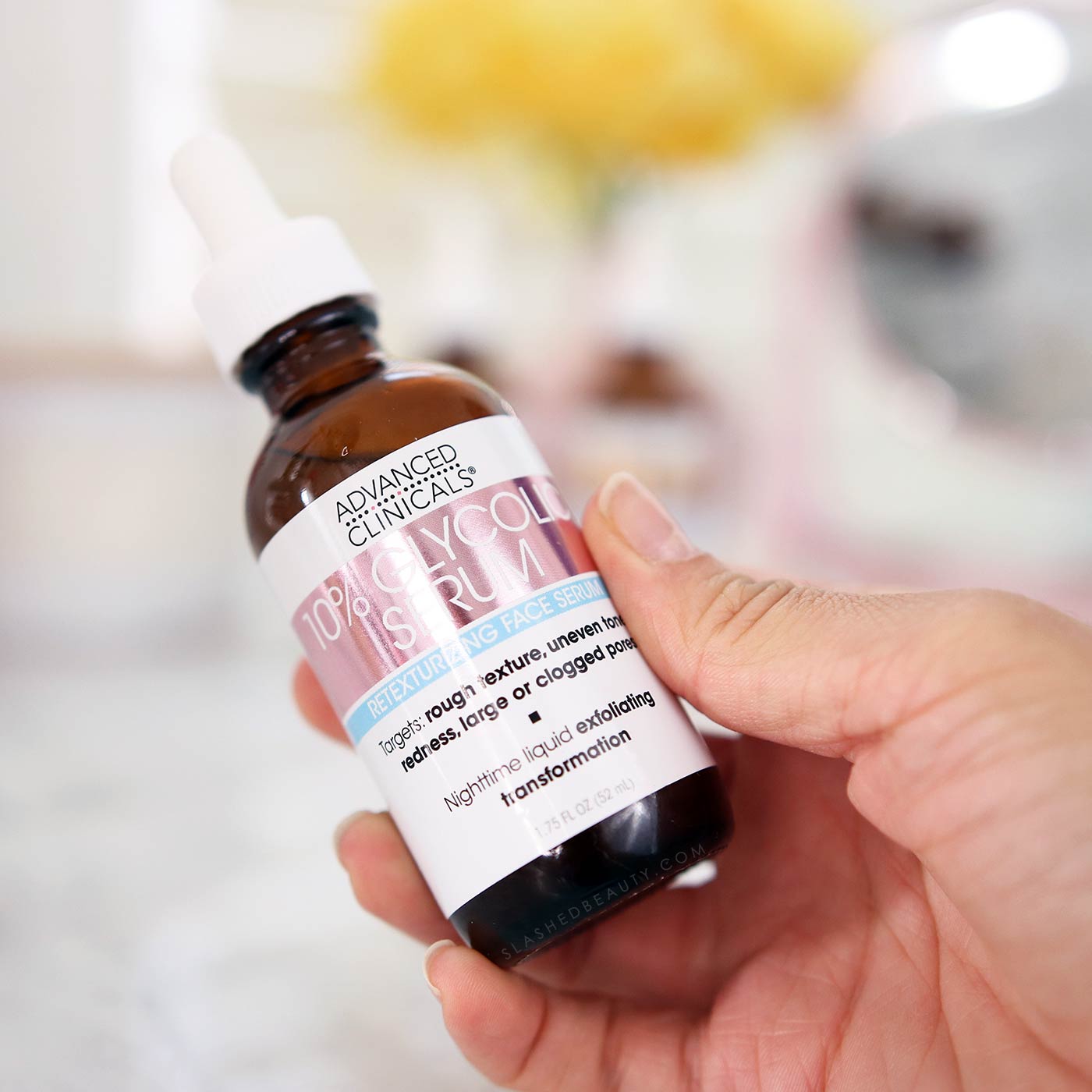
Which Glycolic Acid Serum Should I Try?
If you want to try Glycolic Acid in your skin care routine, check out the serum from Advanced Clinicals— it’s affordable, and it’s working well for me! You can get 30% off with the code SLASHED30 for an even greater deal! Advanced Clinicals is a brand I turned to when I was first getting into serums, and I feel like I’ve come full circle by perfecting my routine with their products. The brand is dedicated to problem-solving skin care products that feature high-quality ingredients and advanced, scientific delivery systems… all for an affordable price. They’re straightforward and effective!
Have you tried Glycolic Acid before?


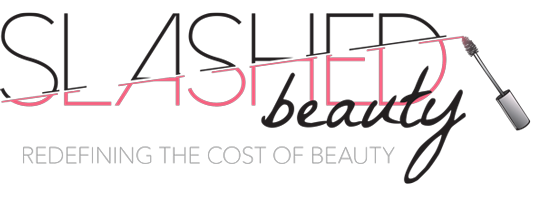
Glamorable
Some say that Glycolic acid can be as effective for anti-aging as otc retinoids!
Courtney
Thank you for including tips for dry skin! Your skin is beautiful.
Kathryne
Good information, you covered all basic points about glycolic acid
Shipra
So informative! I ALWAYS get confused between AHA and Glycolic Acid. Thank you for breaking it down.